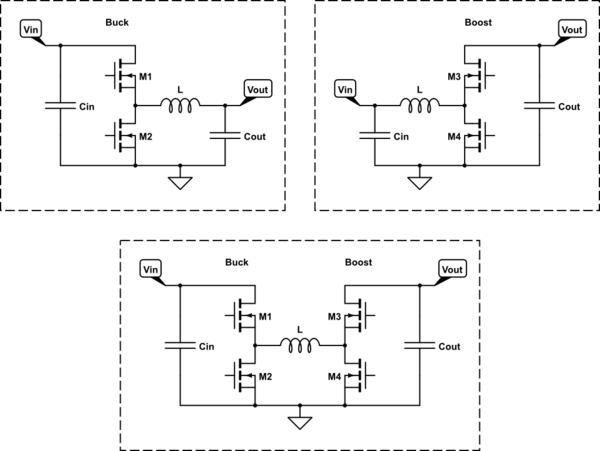The buck-boost converter is valid, but it looks like it wil more than double the price of the cooling fan assembly and slash the MTBF (mean time between failures) to a small fraction of the fan motor life.
The most obvious first step is to stop solving a problem the customer may not need you to solve. I don't recognize your particular power bus specs, but they look like someone is adding safety margins to a typical vehicle 12v lead acid battery power bus. 11v represents engine off or alternator failed with depleted battery and some copper loss and a polysilicon fuse at full load. The 15.2v represents engine-on, failed voltage regulator, overcharged and sulfated battery, lightly loaded power bus. If some of this range can be pushed into a survive for 100 hours instead of normal operating conditions, you may all save some money, but sometimes the path to the system or platform's chief engineer is too long and the specs can't be sanitized.
The second most obvious solution is to contact some fan vendors. You aren't the first person to need a bigger voltage range. Military platforms are typically much larger ranges. The fan vendors have a lot more fan motor design variations and blade/wheel designs available than they catalog. Keeping the number of variations down improves volumes and pricing, and distributor shelf space so expect to pay more for an uncommon motor and or blade/wheel, but at least it won't tank your MTBF at the same time. The best part about this solution is that at most companies the purchasing department will want to take the lead and will take care of finding vendors and stirring up options and only involve you to confirm details and a final list of acceptable choices. They'll handle all the phone calls and the boilerplate and keep the tree of options being explored for management and do the cost/volume haggling and all the vendor salesmen will still invite you along for the free lunch at the nice restaurant. Minimum extra work, someone else has to put together the status and explain it to management, and free lunches. Think about it.
Only increase system complexity and cost when there's no other option. In this case there are at least 3 choices for increasing fan voltage range using off the shelf fan motors with a narrow voltage range.
1) Use a PWM chopper to cut the peak RMS voltage, let it go to 100% except when necessary. PLUS: minimum complexity and design effort, uses motor magnetics for reactive smoothing. MINUS: no low voltage boost, large airflow variation Vmin to Vmax, need to qualify motors for compatibility with chosen PWM scheme, unknown EMI mitigation cost risk.
2) Use a boost regulator and change to a higher voltage motor. PLUS: constant motor voltage minimizes airflow variation, limited EMI mitigation cost risk. MINUS: higher cost, needs cooling, needs stalled (stuck) motor protection, adds significant FITs (failures in thousand hours), have to change fan motor selection.
3) Use a buck regulator and change to a lower voltage motor. The PWM input to the 12v motor could be considered a variation on this scheme. A full-up isolated buck converter isn't needed and isn't cost effective. Cost effective versions will use a chopper and the motor reactance and as little else as possible, which suggests a nominal motor voltage near Vmin. PLUS: Low cost, minimum added complexity, low airflow variation MINUS: adds FITS and $, changes motor, must qualify motors compatible with PWM scheme chosen, unknown EMI mitigation cost risk.
Note that all of the motor control schemes have to be roust enough to support the stalled stalled rotor current to start the motor, not just the average running current, but you can make complexity trade offs about the short term start load versus the stuck rotor overheat and burn issues.
If the voltage range has to be supported, a motor that will accomodate it with appropriate overheat protection is certain to be the high MTBF choice and lowest NRE (nonrecurring engineering cost) and its extremely likely to be lowest unit cost as well.




